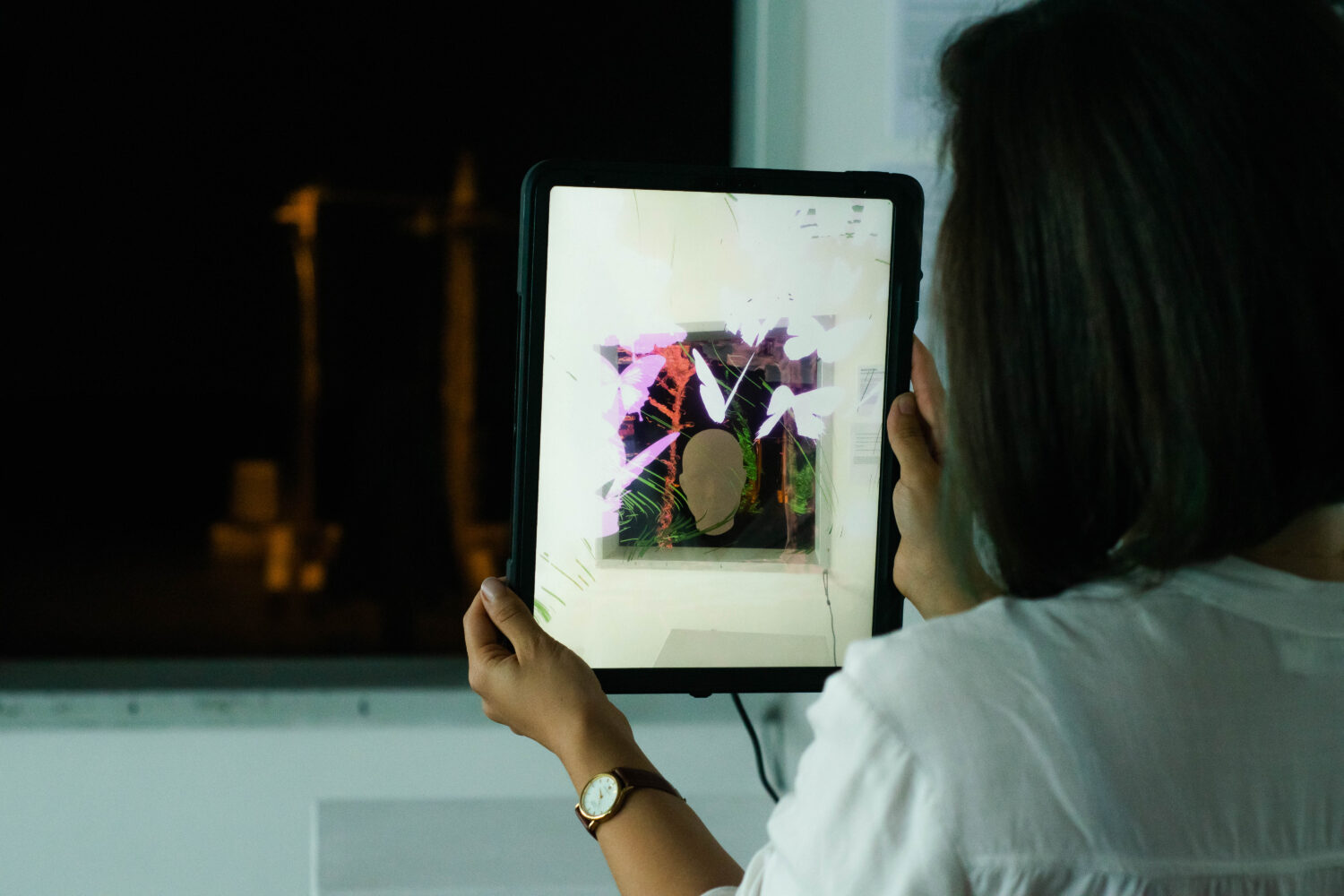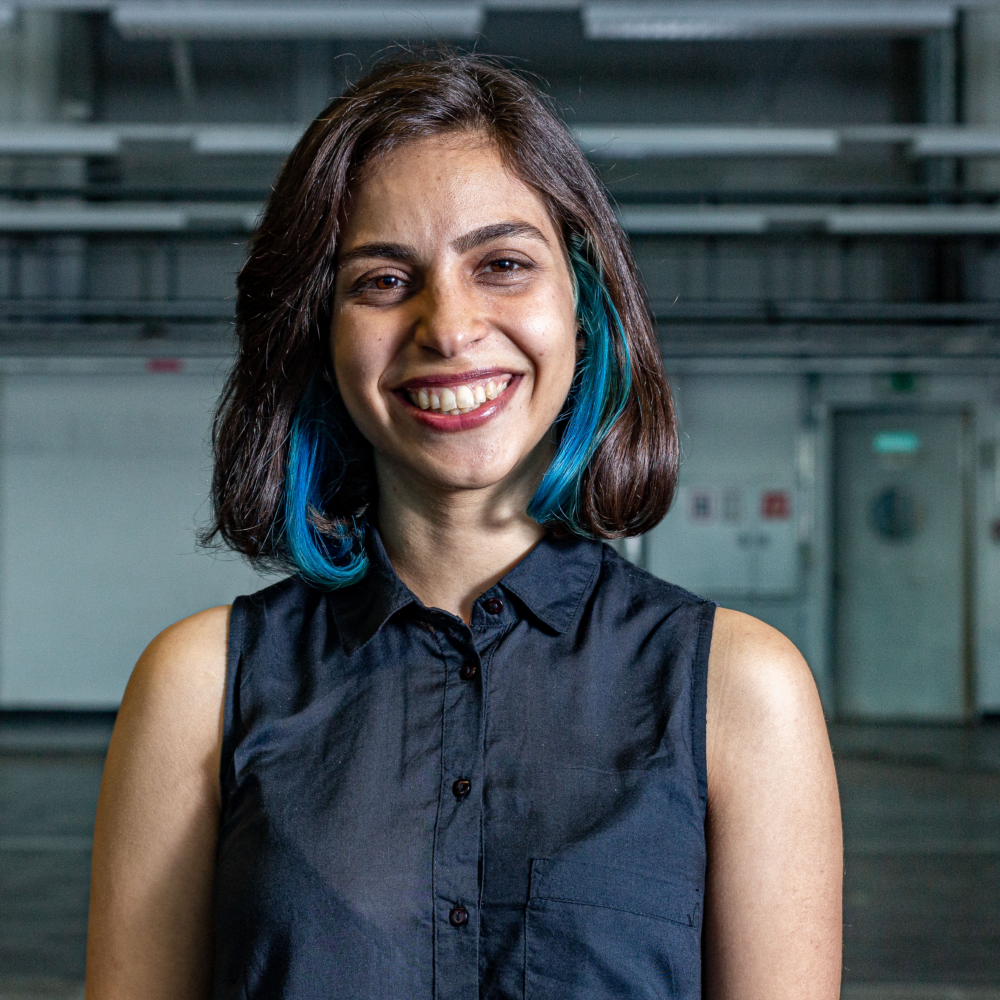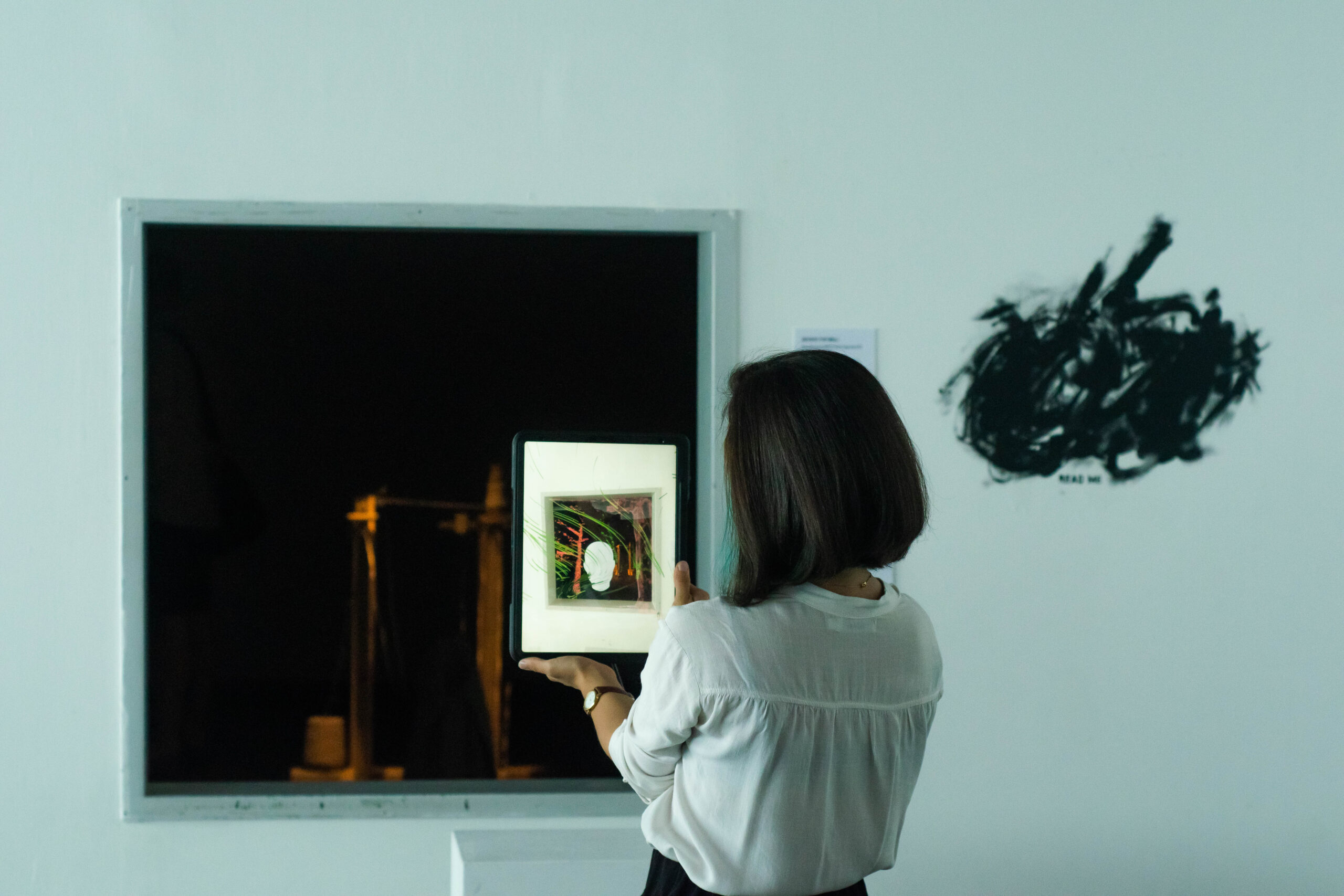A message on a wall, graffiti that has been hidden or censored, holds within itself a whole complexity of experiences, narratives, or statements that co-exist as possibilities. The walls in the streets are a medium for expressing oneself for those who have no access to the hegemonic ones. Furthermore, for those who fight against their messages, they enable other worlds to be expressed.
The project Behind the Wall, by Ghazal Hosseini and Hanif Haghtalab, states that behind those deleted messages, there lie the evidence of other worlds existing, not in the future or past, but in the very present. There are other truths that even when hidden, are still there, crossing the borders of a one and only reality, to the infinite realities including those of the virtual worlds.
Presented as part of the Campus exhibition by the Interface Cultures department of the University of Arts Linz, the project was exhibited in the Post City building, one that carries itself with many stories of previous and possible realities. Ghazal Hosseini shares in this interview some ideas about their project:
Would you like to share a brief statement about your practice with us?
Ghazal Hosseini: I have always been deeply curious about the diverse ways and mediums through which people communicate, and the intersection of art and technology can provide us with a unique opportunity to explore new realms of human expression and understanding. By harnessing this synergy, we can not only create powerful, evocative works but also drive effective social changes. My practice is driven by a desire to make our world a better place by uncovering and amplifying the authentic human experiences that often go unnoticed. It’s about giving voice to the unspoken and shedding light on the hidden truth, ultimately creating a more empathetic and connected society.

How is the idea of crossing boundaries between reality and virtual reality addressed in your installation?
Ghazal Hosseini: In this installation, we aim to explore the concept of blurring the boundaries between reality and virtual reality as a means to discover potential worlds, solutions, and ultimately, a more equitable society where every individual can enjoy their basic human rights. In this project, we delve into the hidden worlds concealed behind a wall writing that has been intentionally defaced, symbolizing an attempt to suppress a message. Wall writing, or on a broader scale, graffiti, serves as a form of self-expression – a medium through which individuals communicate messages that may be impossible to convey openly, particularly in environments where freedom of speech is restricted. When these messages are scratched or defaced, something essential is lost in translation – simple yet profoundly significant notions such as the right to live a normal life or be a normal human. By creating a portal through Augmented Reality (AR), viewers are able to peer beyond the scratched surface of this wall writing. Therefore, they can experience the concealed message that lies beneath, even within what may appear as unsightly graffiti. Behind the scratched wall, a peaceful and symbolic representation of life emerges – a visual testament to the core principles of existence. By doing so, we invite the audience to contemplate the importance of embracing diversity, self-expression, and the fundamental human right to a peaceful and authentic existence.
The experience in your intervention starts with approaching a message on the wall that is no longer visible, suggesting an experience, a story, a world that might have been behind it. How do you feel the installation connects and is transformed by being exhibited in Postcity during the festival?
Ghazal Hosseini: PostCity serves as an ideal backdrop for this project because it is a space filled with an abundance of wall writings and graffiti, each bearing the marks of diverse voices and stories. These walls, in a way, served as a canvas for refugees to express their hopes, dreams, and visions for a better future. As you navigate through PostCity, you can’t help but notice the vibrant paintings, bold colors, and intricate writings adorning its walls. They invite you to pause and reflect. “What are they trying to communicate? Is there more beneath the surface?” These questions naturally arise when encountering these expressions of human creativity and aspiration. This artwork taps into this rich context which begins with the approach to a message on the wall that has faded from visibility. It suggests an experience, a narrative, a world that might have existed behind that now-invisible message, and becomes a bridge between the visible and the hidden, the seen and the unseen. It invites festival-goers to consider not just the surface of things but to delve deeper into the stories and aspirations that lie beneath.
In this way, this installation is not merely an isolated exhibit but a reflection of the very essence of PostCity – a space where stories are told, dreams are shared, and voices find expression. By being showcased here, it is transformed into a testament to the power of art and communication in revealing the untold truth and narratives that surround us.

Ghazal Hosseini is currently a student in the Interface Cultures master’s program at the University of Arts Linz, Austria. She graduated in IT engineering from Shiraz University of Technology where she honed her foundational skills in the world of technology. Her research interests seamlessly converge around the realms of immersive technology, interactive art, human-computer interaction (HCI), game development, and AI. She is passionate about exploring how the intersection of art, science, and technology can be harnessed to drive societal progress, promote mental health, and address the pressing challenges confronting humanity today.
Hanif Haghtalab is studying the Interface Cultures master’s program at the University of Arts Linz and he holds a bachelor’s degree in architecture. He is a self-taught computational designer who has worked on several architecture projects. On top of that he has always been curious about exploring Cities, Architecture and Humans in Digital fields. His main practices are Digital design, Digital fabrication, Creative coding, Interactive art, and XR.
